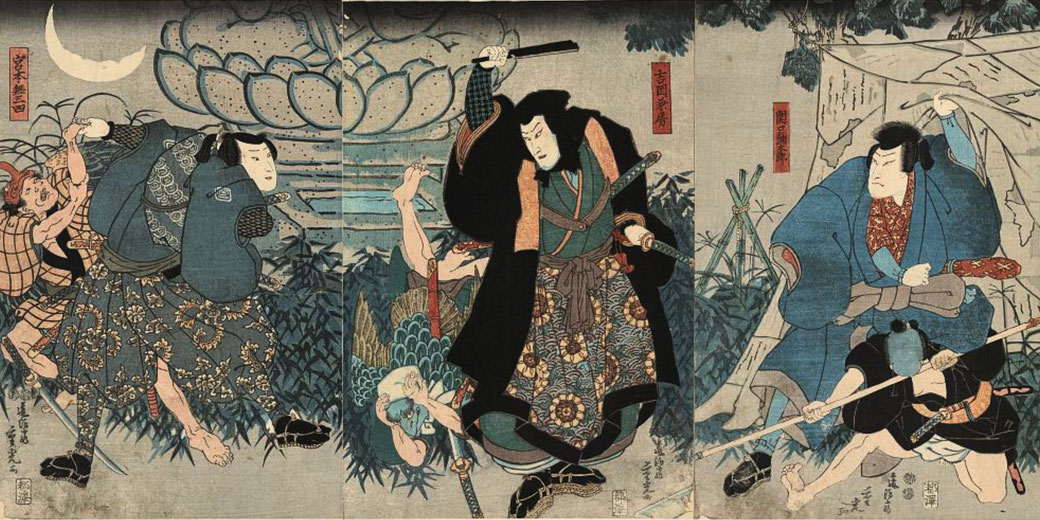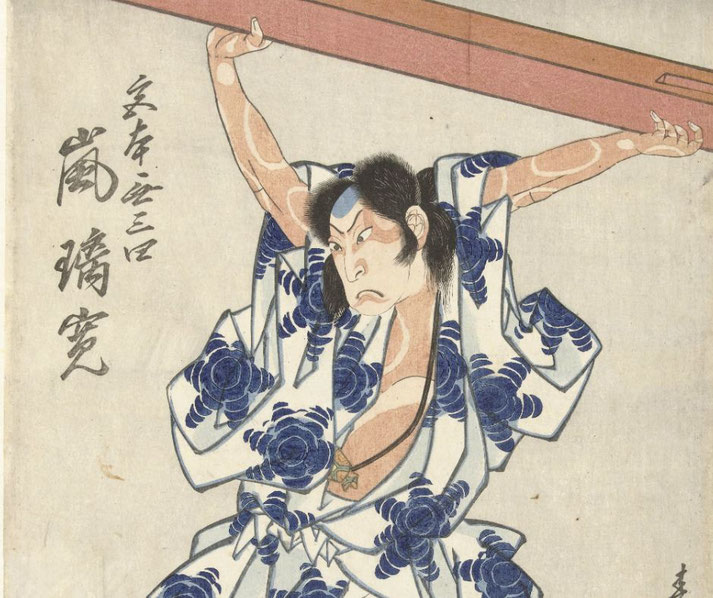Was Miyamoto Musashi the greatest samurai in Japanese history?

During Japan's turbulent Sengoku era, a figure emerged whose legend has survived until today: Miyamoto Musashi.
Known as a master swordsman, Musashi's life was full of dramatic duels, profound philosophies, and constant tests of loyalty.
He was a man who could defeat a seasoned warrior with a simple wooden bokken and later sit calmly to pen "The Book of Five Rings", a treatise that has been read by both warriors and modern business strategists.
But who was the real Miyamoto Musashi?
Was he the unbeatable duelist of lore, a visionary philosopher, or an artist who found peace in painting and sculpture?
And how did a Ronin, a masterless samurai, become a figure of such enduring fascination?
Who was Miyamoto Musashi?
Miyamoto Musashi was born in 1584 in Harima Province, Japan. He lived through the Sengoku era, a period of dramatic civil war.
Musashi's father, Shinmen Munisai, was an accomplished martial artist and master of the sword and jutte (a type of traditional Japanese weapon).
This environment provided Musashi with a rich ground for early training in the arts of war.
The specifics of Musashi's formal education remain largely speculative, but it is believed that he received some form of traditional schooling, which was typical for children of his class during that period.
This education likely included the study of Confucian and Buddhist texts, which might explain his later philosophical inclinations.
Musashi's teenage years were marked by continued dueling and development of his martial skills.
In 1600, one of the most pivotal moments in Japanese history unfolded - the Battle of Sekigahara.
This battle, which ultimately led to the establishment of the Tokugawa Shogunate, was significant for Musashi as well.
Although records are unclear about his specific role, it is known that Musashi participated in this battle, likely on the losing side supporting the Toyotomi clan.
This defeat did not deter him; instead, it led to a period of extensive travel and development, where he engaged in numerous duels, refining his skills and philosophy.
Throughout his twenties, Musashi's reputation as a skilled swordsman grew.

His most famous duels with other samurai
Miyamoto Musashi's martial prowess is legendary, with his life punctuated by numerous duels that showcased not only his skill with the sword but also his strategic acumen.
From a young age, Musashi demonstrated exceptional talent in combat. His first known duel, at the age of thirteen, was against Arima Kihei, a samurai who had boasted about his prowess in the local town.
Musashi challenged and defeated him using a wooden stick, a feat that hinted at his future unconventional approach to combat.
Musashi's approach to dueling was unique and often unpredictable. Unlike many samurai of his time, he did not adhere strictly to the established styles of swordsmanship.
Instead, he developed his own style, known as Niten Ichi-ryū, or the "School of Two Swords," which involved the simultaneous use of both the katana (long sword) and the wakizashi (short sword).
This innovation gave him a significant advantage over his opponents, who were often trained in the use of only one sword.
At the age of 16, he fought and defeated a skilled warrior, Tadashima Akiyama, in the province of Hyōgo.
One of Musashi's most famous duels was against Sasaki Kojirō, a master known for his "Turning Swallow Cut," in 1612.
The duel took place on the remote island of Funajima, and Musashi famously arrived late, which was seen as a psychological tactic to unnerve his opponent.
Musashi, who was about 30 years old at the time, fought using a wooden sword he had carved from an oar during his boat ride to the island.
In a swift encounter, Musashi emerged victorious, further solidifying his reputation as Japan's greatest swordsman.
Throughout his life, Musashi engaged in over sixty duels and remained undefeated, a record that contributed greatly to his legendary status.
His duels were not mere spectacles of physical prowess; they were also intellectual contests, where he outmaneuvered his opponents with superior tactics and psychological strategies.
He was known for his ability to read his opponents' intentions and exploit their weaknesses.
Why Musashi wrote "The Book of the Five Rings"
"The Book of Five Rings," written by Miyamoto Musashi in the 17th century, become a classic that offers insights into strategy and philosophy.
Written towards the end of Musashi's life, this work summarises the essence of his martial expertise and his deep philosophical views.
The book is divided into five sections, each named after the elements Earth, Water, Fire, Wind, and Void, symbolizing different aspects and approaches to combat and life.
The Earth section serves as an introduction, laying out the framework of Musashi's strategy and the principles of his Niten Ichi-ryū, or Two Heavens as One, swordsmanship.
This part emphasizes the importance of adopting a broad perspective, akin to looking at the earth from a high vantage point, to understand the deeper strategies of martial arts.
In the Water section, Musashi delves into the specifics of tactics and techniques.
He likens the adaptable yet powerful nature of water to the flexibility required in battle.
The text underscores the importance of fluidity in both physical movement and strategic thinking, encouraging the reader to adapt to changing circumstances seamlessly.
The Fire book discusses the heat of battle, focusing on the dynamics of active combat.
Musashi explores the psychological aspects of fighting, such as the importance of timing, rhythm, and how to exploit the weaknesses of an opponent.
This section is particularly relevant to the immediate, physical confrontations of sword fights.
Wind, the fourth book, is an analysis of other schools of martial arts of Musashi's time.
It serves as a critique and a comparison to his own style, underscoring the importance of understanding and respecting different approaches while being confident in one's own.
The final section, Void, is the most philosophical. It speaks of the importance of what cannot be seen or felt physically.
This part goes beyond mere technique or strategy and delves into the deeper wisdom required for mastery.
Musashi emphasizes the concept of 'Mu' or 'emptiness', suggesting that true understanding comes from within and transcends physical techniques.
Becoming a philosopher and Musashi's death
In the later years of his life, Miyamoto Musashi, who had lived as a warrior and a philosopher, gradually transitioned away from the life of a duelist to that of a recluse and an artist.
After his famed duel with Sasaki Kojirō in 1612, Musashi's perspective on life and his own legacy began to shift.
By this time, he had already established himself as Japan's most renowned swordsman, but the subsequent years saw him delve deeper into other aspects of life, including art, writing, and spiritual contemplation.
In 1643, Musashi, then in his late 50s, began a period of self-imposed seclusion in a cave named Reigandō, located near Kumamoto.
This period of solitude was a time of intense reflection and creativity for Musashi.
It was here, in the quietude of Reigandō, that he penned "The Book of Five Rings," distilling his lifetime of experience into philosophical and strategic teachings.
This work was completed around 1645, a mere two years before his death, and serves as a spiritual and strategic guide, reflecting his comprehensive understanding of the martial arts.
Musashi also dedicated significant time to perfecting his skills in other arts.
He became an accomplished artist, known for his sumi-e (ink paintings) and calligraphy.
His artworks, much like his approach to martial arts, were characterized by a sense of directness and simplicity, yet profound in their expression.
His paintings, often depicting traditional subjects like birds, landscapes, and Buddhist figures, reflected the Zen influences in his life and thought.
Towards the end of his life, Musashi also engaged in teaching and passing on his martial knowledge.
He had numerous students, to whom he taught his style of swordsmanship.
However, unlike his earlier years, his teachings now emphasized not just the technique but also the underlying philosophy and the importance of a well-rounded character.
Miyamoto Musashi died on June 13, 1645, leaving behind a legacy that extended far beyond his prowess as a swordsman.
His final years were a testament to his multifaceted personality - a feared warrior, a deep thinker, and a skilled artist.
His life's journey from a duelist to a philosopher and artist highlights a path of continuous growth and self-reflection.
What do you need help with?
Download ready-to-use digital learning resources
Copyright © History Skills 2014-2025.
Contact via email
With the exception of links to external sites, some historical sources and extracts from specific publications, all content on this website is copyrighted by History Skills. This content may not be copied, republished or redistributed without written permission from the website creator. Please use the Contact page to obtain relevant permission.





